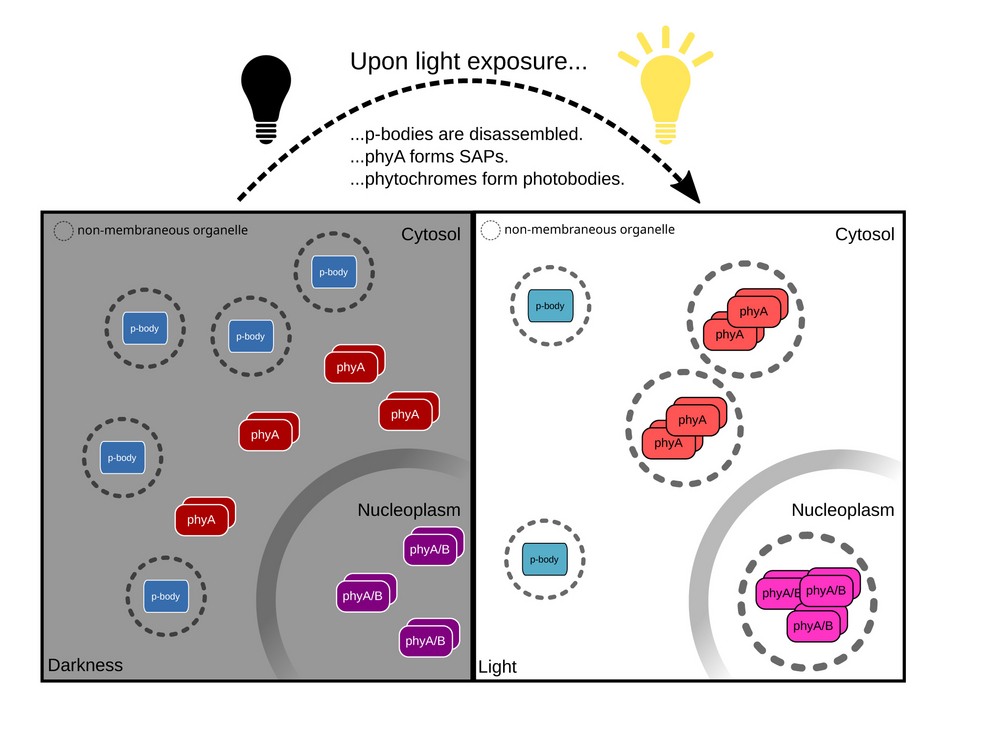The Light Reactivity of Liquid-liquid Phase Separated Organelles in Arabidopsis thaliana
Liquid-liquid phase separation (LLPS) is a process in which two liquids unmix, comparable from the unmixing of vinegar and oil in a salad dressing. In recent years, this process of separating different cellular components into non-membranous organelles have gained attention as a mean of compartmentalization of reaction spaces. In plants, ambient light is detected and integrated by several classes of receptors, with phytochromes being one of the most important ones. Phytochromes are involved in several LLPS-related processes, such as the formation of subnuclear bodies, so-called photobodies but also cytoplasmic structures, termed SAPs. This and other similar structures are known for 20 years, but their contents and function remain partially elusive to date. In this project, I want to biochemically purify phytochrome-related LLPS-formed structures, and subject them to a transcriptomic and proteomic analysis. This will help to understand the mechanisms behind the light reactivity of LLPS in plants and its consequences for the adaption to the changing environmental conditions a plant is exposed to.sequences for the adaption to the changing environmental conditions a plant is exposed to.







